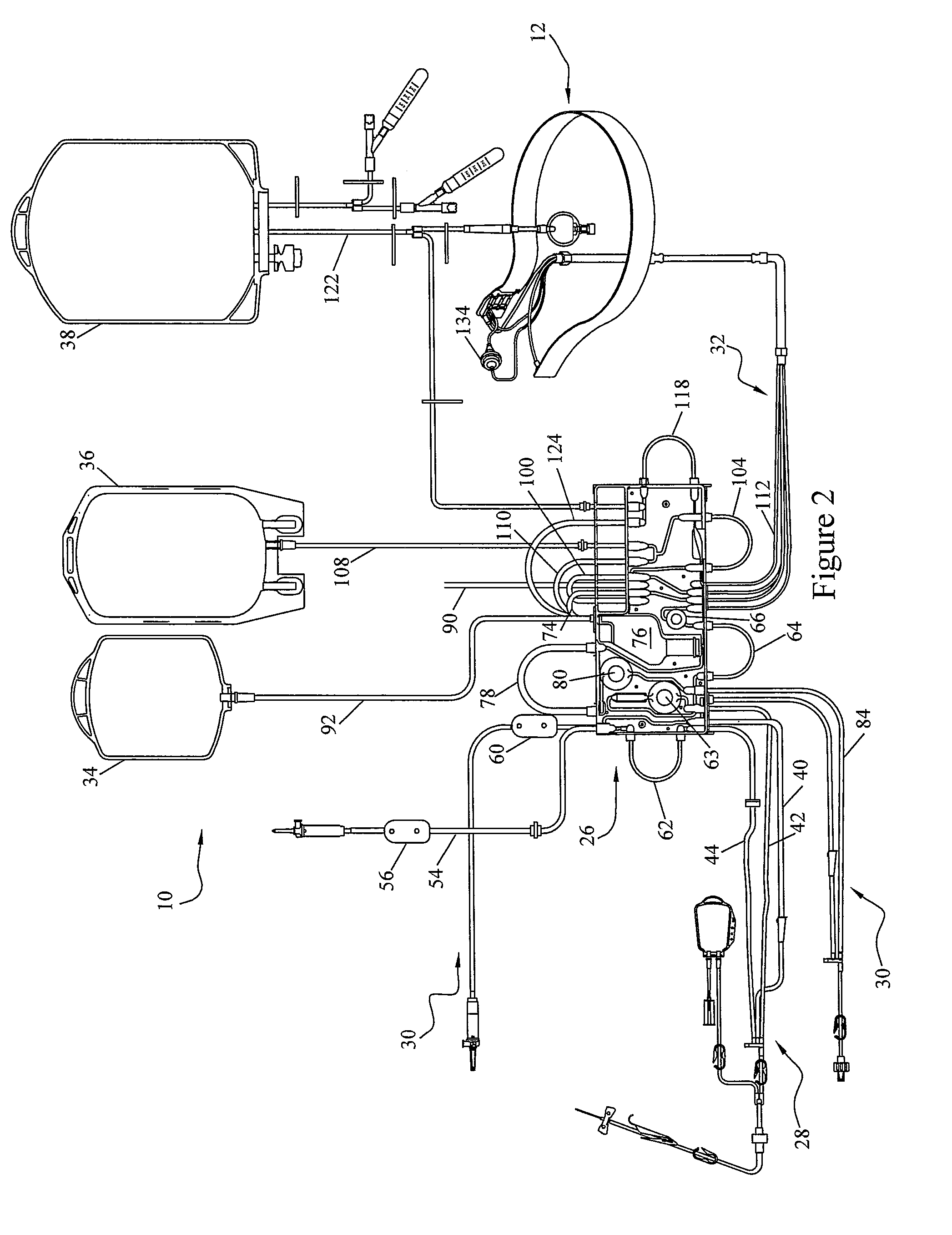Blood processing apparatus with controlled cell capture chamber trigger
a technology of blood processing apparatus and trigger, which is applied in the direction of centrifuges, separation processes, filtration separation, etc., can solve the problems of reducing the “platelet viability” of the platelet, introducing its own set of problems, and conventional porous filter may be inefficient, so as to improve the donation process, improve the collection procedure, and improve the effect of white blood cell collection
- Summary
- Abstract
- Description
- Claims
- Application Information
AI Technical Summary
Benefits of technology
Problems solved by technology
Method used
Image
Examples
Embodiment Construction
[0030]To describe the present invention, reference will now be made to the accompanying drawings. The present invention comprises a blood processing apparatus having a camera control system, as disclosed in U.S. patent application Ser. No. 11 / 163,969, application Ser. No. 10 / 884,877 and application Ser. No. 10 / 905,353. It may also be practiced with a TRIMA® blood component centrifuge manufactured by Gambro BCT, Inc. of Colorado or, alternatively, with a COBE® SPECTRA™ single-stage blood component centrifuge also manufactured by Gambro BCT, Inc. Both the TRIMA® and the SPECTRA™ centrifuges incorporate a one-omega / two-omega sealless tubing connection as disclosed in U.S. Pat. No. 4,425,112 to Ito, the entire disclosure of which is incorporated herein by reference. The SPECTRA™ centrifuge also uses a single-stage blood component separation channel substantially as disclosed in U.S. Pat. No. 4,094,461 to Kellogg et al. and U.S. Pat. No. 4,647,279 to Mulzet et al., the entire disclosures...
PUM
| Property | Measurement | Unit |
|---|---|---|
| thickness | aaaaa | aaaaa |
| optical characteristics | aaaaa | aaaaa |
| length of time | aaaaa | aaaaa |
Abstract
Description
Claims
Application Information
 Login to View More
Login to View More - R&D
- Intellectual Property
- Life Sciences
- Materials
- Tech Scout
- Unparalleled Data Quality
- Higher Quality Content
- 60% Fewer Hallucinations
Browse by: Latest US Patents, China's latest patents, Technical Efficacy Thesaurus, Application Domain, Technology Topic, Popular Technical Reports.
© 2025 PatSnap. All rights reserved.Legal|Privacy policy|Modern Slavery Act Transparency Statement|Sitemap|About US| Contact US: help@patsnap.com



